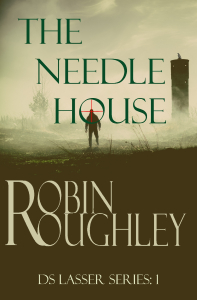Contributed by Dr. Ken Metz, Professor of Music (University of the Incarnate Word)
 Arthur Honegger (1892-1955) suffered a health crisis in 1947 and did not live too many years beyond that, but he had one more symphony in him. Symphony No. 5 (1950) is subtitled “Di tre re,” with re referring to the note D, which ends every movement. Does this D, with its association with Requiem settings, point to death? Probably so, but to my ears this three-movement work (played here by the Symphonieorchester des Bayerischen Rundfunks under Charles Dutoit) also evokes devotion, delight, and defiance, three D-words I’d like to add to describe aspects of the symphony. I hear the first movement as devotion to Honegger’s art and faith. Yes, there is some very sour dissonance in the chorale-like first theme, but the landing places are typically rich extended chords that possess a soaring devotional quality. The climactic trumpet part sounds at once like a plaintive cry to God and a declaration of faith. The second movement is scherzo-like and comparable, in a way, to the third movement of Beethoven’s Fifth, revealing a sense of humor about the human condition. The adagio sections in the movement offer a contrast, perhaps the promise of a soothing afterlife. The third movement is the boldest, and I hear in it a striving for strength, a will to persevere despite any obstacle. I want to cheer the piece on as it raucously unfolds, anchored by assertive brass statements. I don’t feel despair (another D word). I think Honegger knew that music had more to offer and that he had more to leave behind.
Arthur Honegger (1892-1955) suffered a health crisis in 1947 and did not live too many years beyond that, but he had one more symphony in him. Symphony No. 5 (1950) is subtitled “Di tre re,” with re referring to the note D, which ends every movement. Does this D, with its association with Requiem settings, point to death? Probably so, but to my ears this three-movement work (played here by the Symphonieorchester des Bayerischen Rundfunks under Charles Dutoit) also evokes devotion, delight, and defiance, three D-words I’d like to add to describe aspects of the symphony. I hear the first movement as devotion to Honegger’s art and faith. Yes, there is some very sour dissonance in the chorale-like first theme, but the landing places are typically rich extended chords that possess a soaring devotional quality. The climactic trumpet part sounds at once like a plaintive cry to God and a declaration of faith. The second movement is scherzo-like and comparable, in a way, to the third movement of Beethoven’s Fifth, revealing a sense of humor about the human condition. The adagio sections in the movement offer a contrast, perhaps the promise of a soothing afterlife. The third movement is the boldest, and I hear in it a striving for strength, a will to persevere despite any obstacle. I want to cheer the piece on as it raucously unfolds, anchored by assertive brass statements. I don’t feel despair (another D word). I think Honegger knew that music had more to offer and that he had more to leave behind.





